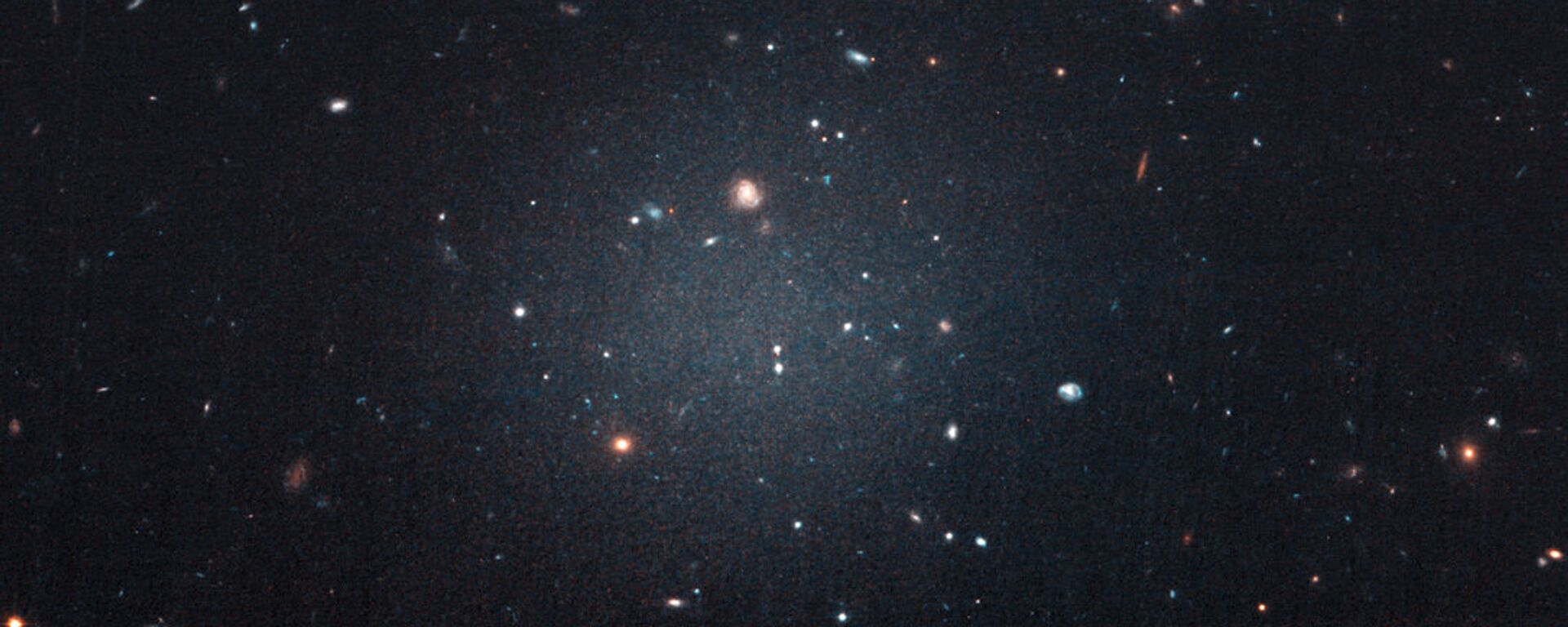https://sputnikglobe.com/20240303/scientists-discover-how-the-universe-was-illuminated-after-the-big-bang-1117099039.html
Scientists Discover How the Universe Was Illuminated After the Big Bang
Scientists Discover How the Universe Was Illuminated After the Big Bang
Sputnik International
The universe was veiled in darkness during its formative ages several billions of years ago, until light penetrated the dense sheets of fog covering it. A recent study using NASA’s James Webb Space Telescope has led to the discovery of the earliest source of this luminescence.
2024-03-03T17:16+0000
2024-03-03T17:16+0000
2024-03-03T17:16+0000
beyond politics
science & tech
newsfeed
society
france
earth
paris
nasa goddard space flight center
james webb space telescope (jwst)
https://cdn1.img.sputnikglobe.com/img/07e7/0b/07/1114803853_0:448:2048:1600_1920x0_80_0_0_ceed819073c1958c82e497878d662819.jpg
Researchers from the Paris Institute of Astrophysics in France have used the James Webb Space Telescope (JWST) to demonstrate that dim tiny star clusters removed the dense hydrogen fog concealing the early Universe.The study was published in the scientific journal Nature.Following the Big Bang, the Universe simmered with tiny particles for roughly 380,000 years. As the cosmos cooled, loose electrons and protons fused to form a neutral hydrogen gas.A prolonged span of darkness followed till the gas collapsed to form stars emitting ultraviolet (UV) light. However, the remaining gas penetrating the universe either sucked up or dispersed the UV light. This made the Universe to resemble a misty woodland with faint, glittering fireflies and light sources visible only from a short distance.Making the Universe transparent required bombarding this gas with ionizing radiation, transforming neutral hydrogen into charged particles. Scientists looked at three possible sources: giant and dwarf galaxies and energetic light beams powered by huge black holes or quasars. The study team observed that infant galaxies are capable of emitting ionizing radiation.However, James Rhoads, an astrophysicist at NASA Goddard Space Flight Center in Greenbelt, Maryland — not part of the research team — argued that there was no substitute for having the actual data from the early galaxies to substantiate the theory.The researchers leveraged a major group of galaxies far from Earth as a natural telescope to study eight small galaxies from when the universe was less than a billion years old. These immense galactic bodies were the dullest ever observed from that time period.Analyzing the JWST data, the astronomers studied the UV light from these galaxies, estimating their ability to have ionized hydrogen gas around them. The scientists believe that these small star clusters were so common up to a billion years after the Big Bang that they could have ionized all the gas in the universe, even if just five percent of their ionizing radiation escaped into intergalactic space.Small galaxies were among the first to form in the Universe, with each emitting radiation that generated transparent bubbles that expanded into the neighboring gas clouds. Over time, all these bubbles merged and transformed the universe.
https://sputnikglobe.com/20220520/galaxies-devoid-of-dark-matter-formed-during-massive-collision-billions-of-years-ago-study-says-1095669632.html
france
earth
paris
2024
Chimauchem Nwosu
https://cdn1.img.sputnikglobe.com/img/07e7/09/01/1113046371_0:99:1536:1635_100x100_80_0_0_9c5c627283eca931c39fe4852bbb301c.jpg
Chimauchem Nwosu
https://cdn1.img.sputnikglobe.com/img/07e7/09/01/1113046371_0:99:1536:1635_100x100_80_0_0_9c5c627283eca931c39fe4852bbb301c.jpg
News
en_EN
https://cdn1.img.sputnikglobe.com/img/07e7/0b/07/1114803853_0:256:2048:1792_1920x0_80_0_0_04c09362aa68839598781345ef588eb6.jpg
Chimauchem Nwosu
https://cdn1.img.sputnikglobe.com/img/07e7/09/01/1113046371_0:99:1536:1635_100x100_80_0_0_9c5c627283eca931c39fe4852bbb301c.jpg
dwarf galaxies, atomic hydrogen fog, intergalactic space, ionization radiation, ultraviolet light, neutral hydrogen gas, milky way, reionization process, star clusters, james webb space telescope, quasars, big bang, cosmic evolution, black holes.
dwarf galaxies, atomic hydrogen fog, intergalactic space, ionization radiation, ultraviolet light, neutral hydrogen gas, milky way, reionization process, star clusters, james webb space telescope, quasars, big bang, cosmic evolution, black holes.
The universe was veiled in darkness during its formative ages several billions of years ago, until light penetrated the dense sheets of fog covering it. A recent study using NASA’s James Webb Space Telescope has led to the discovery of the earliest source of this luminescence.
Researchers from the Paris Institute of Astrophysics in France have used the James Webb Space Telescope (JWST) to demonstrate that dim tiny star clusters removed the dense hydrogen fog concealing the early Universe.
“The Universe became transparent… It’s because of reionization that we are able to see distant galaxies,» said Hakim Atek, the lead author of the research and an astrophysicist at the Paris Institute of Astrophysics.
A prolonged span of darkness followed till the gas collapsed to form stars emitting ultraviolet (UV) light. However, the remaining gas penetrating the universe either sucked up or dispersed the UV light. This made the Universe to resemble a misty woodland with faint, glittering fireflies and light sources visible only from a short distance.
Making the Universe transparent required bombarding this gas with ionizing radiation, transforming neutral hydrogen into charged particles.
Scientists looked at three possible sources: giant and dwarf galaxies and energetic light beams powered by huge black holes or quasars. The study team observed that infant galaxies are capable of emitting ionizing radiation.
However, James Rhoads, an astrophysicist at NASA Goddard Space Flight Center in Greenbelt, Maryland — not part of the research team — argued that there was no substitute for having the actual data from the early galaxies to substantiate the theory.
Ionizing radiation is a form of energy emitted by atoms, which disperses through space either as electromagnetic waves, such as gamma or X-rays, or as particles like neutrons, beta or alpha particles.
Analyzing the JWST data, the astronomers studied the UV light from these galaxies, estimating their ability to have ionized hydrogen gas around them. The scientists believe that these small star clusters were so common up to a billion years after the Big Bang that they could have ionized all the gas in the universe, even if just five percent of their ionizing radiation escaped into intergalactic space.
Small galaxies were among the first to form in the Universe, with each emitting radiation that generated transparent bubbles that expanded into the neighboring gas clouds. Over time, all these bubbles merged and transformed the universe.



